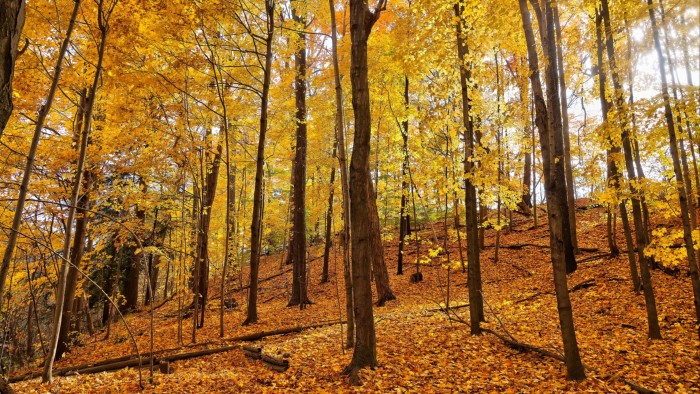Unlock the Editor’s Digest for free
Roula Khalaf, Editor of the FT, selects her favourite stories in this weekly newsletter.
No industry symbolises Canada more than maple syrup. The dark, sweet sap, vacuum pumped from maple trees during the cold winter months, is so important to the country that it maintains a national stockpile. Just as Japan has a strategic reserve of rice, so Canada has one for syrup.
After a stretch of bad harvests, last year’s production set a new record. This year could beat it. At a rustic, wood-built cabane à sucre (sugar shack) outside Montreal, there was still snow in the air and no sign of buds on trees by mid-April — an indication it would be a particularly long maple season. There was plenty of syrup to pour over our pork-heavy lunch — a Québécois tradition.
But Canada’s syrup industry is now facing another disruption south of the border. US tariffs, which Trump has threatened to set at 35 per cent for some products from August 1, would be extremely costly for the country’s producers.
The tariffs threaten to change an industry that has existed for more than a century. Tapping maple trees is a practice that long predates European settlement of North America. The native technique to extract sap — which was used to cook in place of water and to season instead of salt — involved making a V-shaped incision on the bark and placing reeds to run the sap into a pot to be evaporated into concentrated sugars.
Typically extracted from a few species of trees — notably the sugar and red maple varieties, which take some 40 years to grow to maturity — production requires cold winters and springs with freezing nights and above-freezing days, confining the harvest window to a few short weeks. The forest territory straddles the US-Canada border, with most of the production centred on Quebec, Vermont and New York.
This is why Canada dominates global maple syrup production, accounting for approximately 73 per cent of output last year. US demand is so voracious that it can only be satiated with large volumes of Canadian imports. Despite US domestic production quadrupling over the past two decades, the country’s taps cannot keep up. Over 45mn kilogrammes of Canadian maple syrup — enough to smother 3bn American pancakes — went across the border in 2024, amounting to almost 60 per cent of the country’s total demand.
The syrup is therefore a good representation of both Canada’s economic dependence on its southern neighbour — and its unique forms of leverage.
For years, syrup flowed freely across the border. But in 1909 US tariffs were imposed to protect American production. In 1972, when those tariffs were cut back to zero, the US Department of Agriculture released a research report which found that the maple tariff was “never very effective in protecting the domestic maple industry from foreign competition”.
After this, Canada made its own efforts to protect the industry. In 1996, a maple syrup federation was created in Quebec — where 90 per cent of its syrup comes from. The cartel (known formally as the Quebec Maple Syrup Producers) sets a floor on global syrup prices and smooths out variable harvests.
Once processed, Canadian maple syrup can sit in the federation’s enormous warehouses — which have 53 Olympic swimming pools’ worth of storage capacity — for years without degrading.
The federation says that it any unsold inventory can be added to this strategic reserve. It also points out that it has made strides diversifying away from US buyers in recent years, reducing the proportion of production that goes there by roughly 20 percentage points over the last couple decades.
Still, tariffs would cause widescale disruption on both sides of the border.
Canadian prime minister Mark Carney has pointed to other points of resistance the country can wield, notably trade in potash, crude oil and hydroelectric power. “Canada has what the world needs,” he declared after his election victory.
Trump’s message on the domestic impact of US tariffs has been to tell American children that they can make do with less dolls. He may next try telling them to eat less pancakes.
Source link









